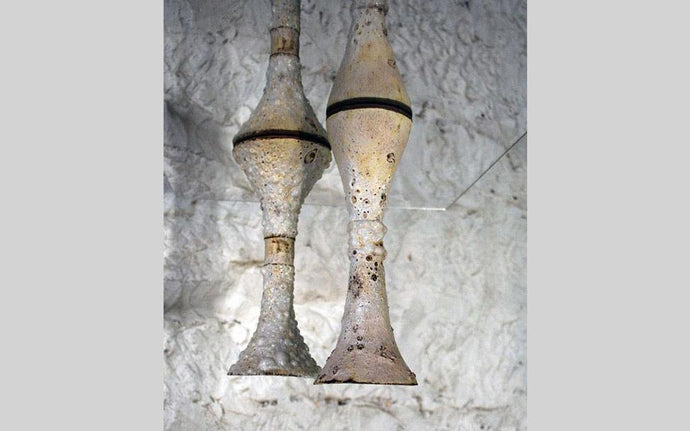Alana Wilson

On the beauty of decay | Kathyrn Carter
There’s something lovely about the brokenness. It’s as though attention has been paid to the ruining—a thoughtful and considered destruction of a something that could have been perfect. Each blemish questioning all preconceived notions of what beauty really is.
Such is the work of Alana Wilson, a ceramicist whose intentions stray from aesthetic idealism towards anthropological exploration. Born in Canberra, Wilson spent much of her childhood in New Zealand, before moving to Sydney at seventeen to study fine art. Today, from a studio overlooking Tamarama Beach, the artist creates vessels that reference historic utilitarian forms, working to a style that she describes as raw, still, subtle, and experimental.
I am constantly working between the balance of raw and refined, primitive and contemporary, completion and decay. Aesthetically, I think the textural qualities and physical presence are first and foremost in what I seek in my own work.
The thought of clay often conjures images of seamless silhouettes—shapely urns, spherical bowls; cylinder vases. But Wilson’s pieces belong to a chapter of ceramics history that is yet to be written. There’s an unapologetic rawness to the work, an imperfectness that invites you to feel deeper into the present moment. In a world where flawlessness is so often perceived as the aesthetic ideal, Wilson’s process aims to highlight the innate impermanence of everything; the beauty of decay.
In 2011, trend forecaster Lidewij Edelkoort announced the dawn of the post fossil era, stating that the period of glamorous and streamlined design for design’s sake had come to an end. Moving forward, a new generation of artists were expected to retrace their roots, refine their earth and research their history, sometimes returning to the beginning of time. Edelkoort’s forecast predicted that primitive matter and organic shapes would soon tiptoe into the zeitgeist; a reflection of man’s longing for a more meaningful and ritualistic relationship with the earth. Though Wilson admits she had not heard of this theory, she does feel a connection to the ideology at its core.
I think this [post fossil movement] is definitely a sign of the times, and has evolved from the evidential progress within the Western World in the last 15-20 years - within technology, commerce, and sociology…I feel at the moment there are numerous aspects of society in need of and appreciating the opposing points of this growth - physicality, reality, and human connection, both current and historical.
In a way, Wilson’s work satiates this appetite for connection. Her vessels appear deliberately decayed; their flawed finishes a subtle reminder of life’s impermanence, of our own mortality. When asked why she so often returns to this idea of delicate deterioration, Wilson admits that, more than anything, it’s about the acceptance of change.
I think throughout my life I have learnt to accept and embrace the sense of change, which is essentially what deterioration and decay is. "He not busy being born is busy dying.” I aim to embed this value into my work…
For Wilson, it’s about bringing awareness back to the present moment, reminding us of the importance of humanity; the tender balance between order and disorder—notions that are strongly reflected in the artist’s process. From conceptualisation to creation, Wilson’s work remains a paced and considered progression, with pieces born from her experimentations with glazes, material and form.
My number one tools are my hands and body, the artist tells me, …beyond that I have a few favourite wooden knives, scalpels, and Japanese glazing brushes.
Anchoring this experimental approach is clear philosophical intent; a strong resolve that is attune to Wilson’s own sense of artistic obligation. As Wilson’s career has evolved, so has her awareness of how much she contributes to our consumerist culture, and to its perpetual cycle of production.
The world does not need more "stuff", and I often feel an obligation to counteract the world of material commerce and highlight humanity and connection to the past and present moment. It is a constant balancing act to create without promoting commercialism or idolisation of material objects.
Consequent to this theoretical process, to view the artist’s work is to be confronted by more than just something to consume, but rather, something to consider. In a world largely intoxicated by perfection, and amid the relentless striving for material possession, Wilson invites us to take a sobering pause, to ruminate on the beauty of decay.
Words | Kathryn Carter









